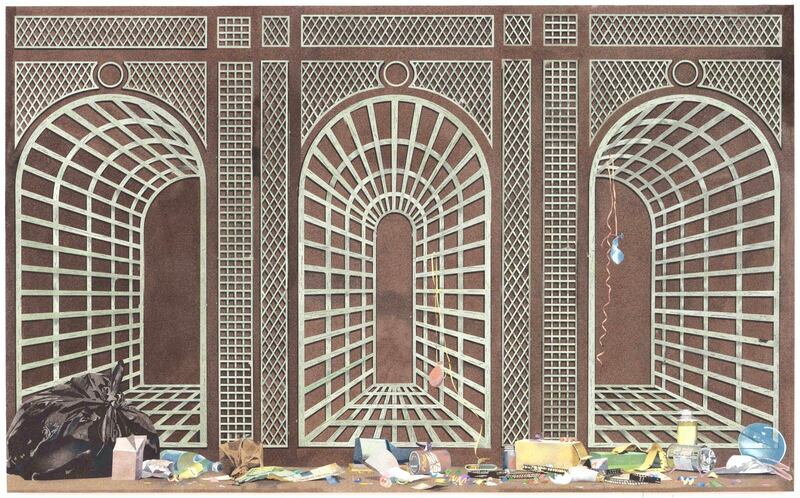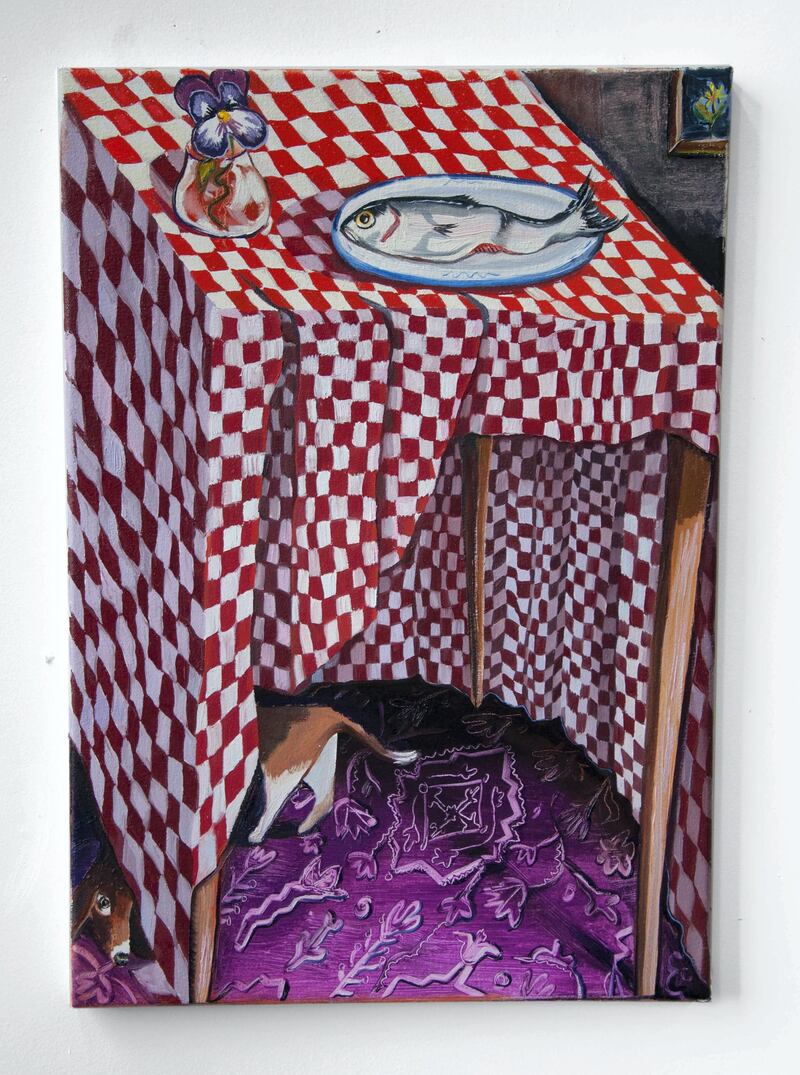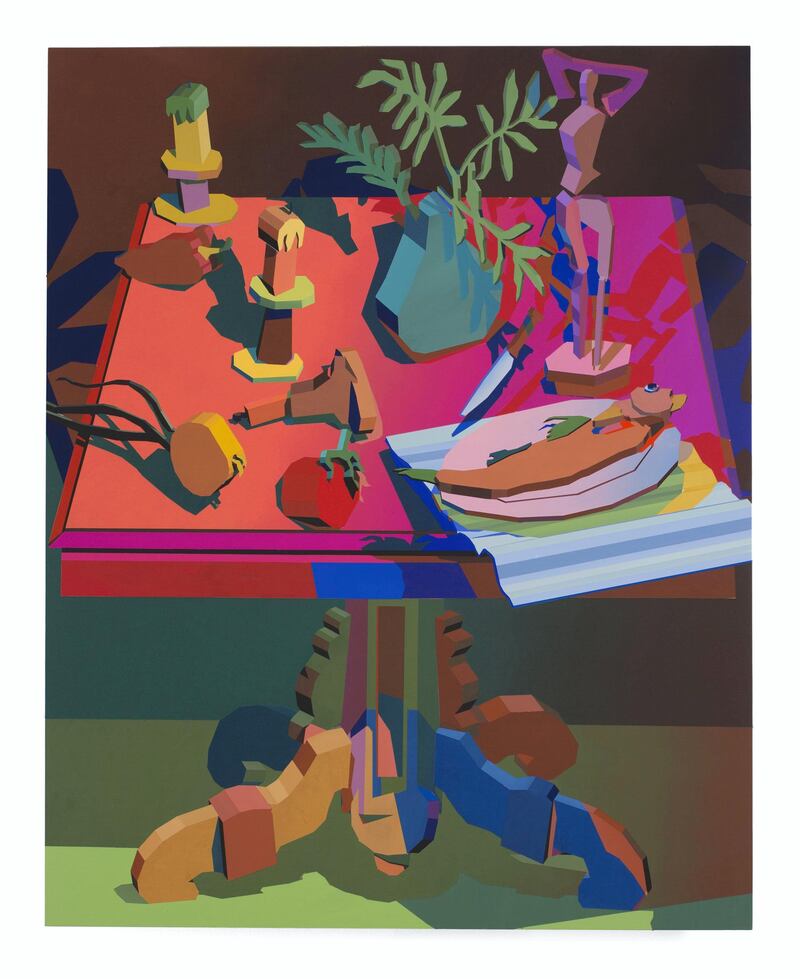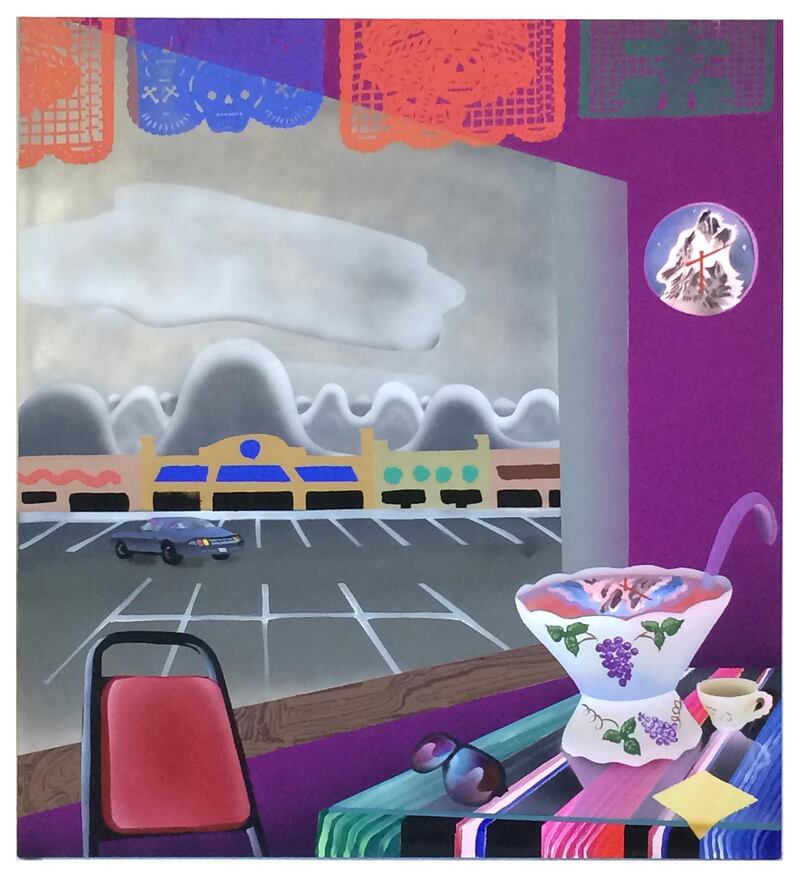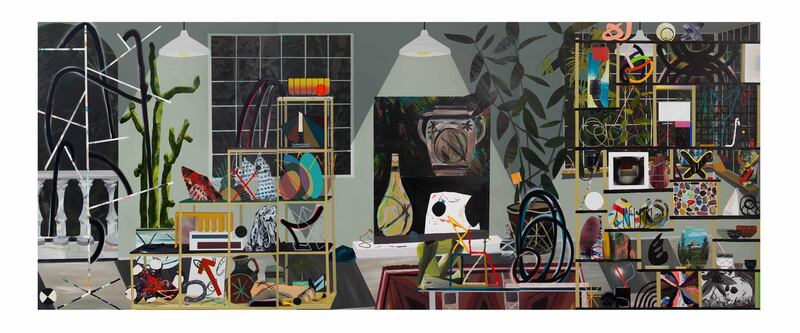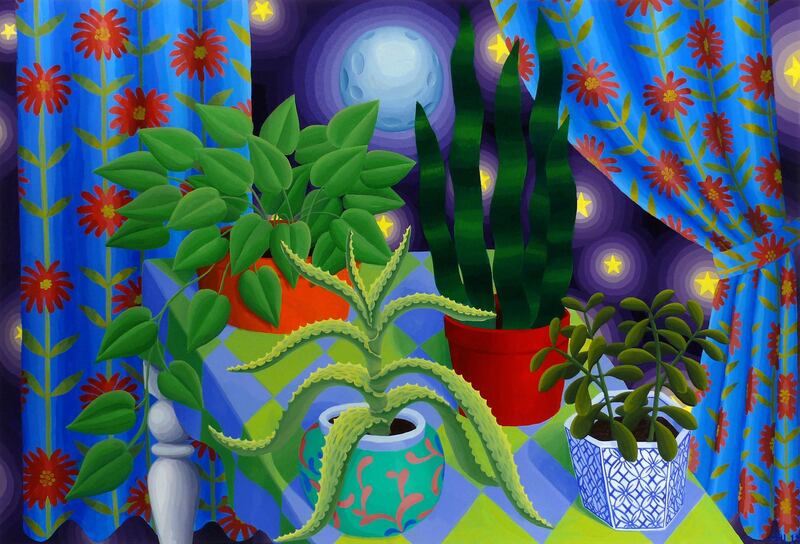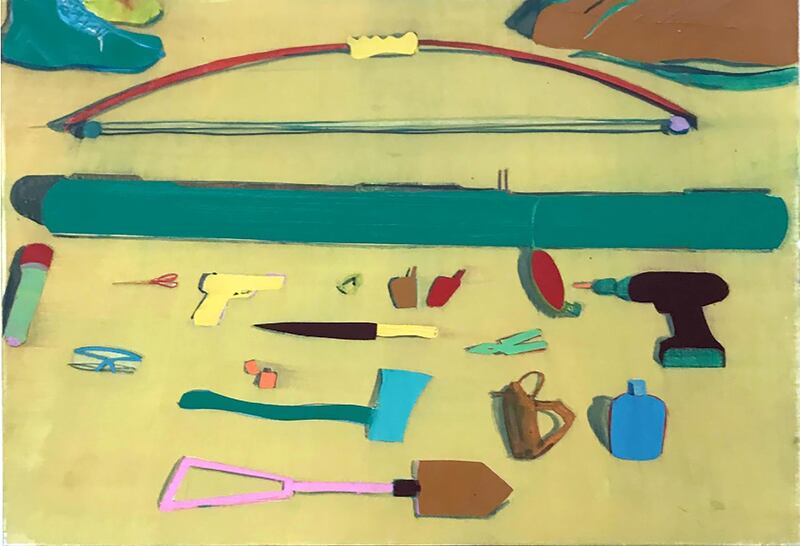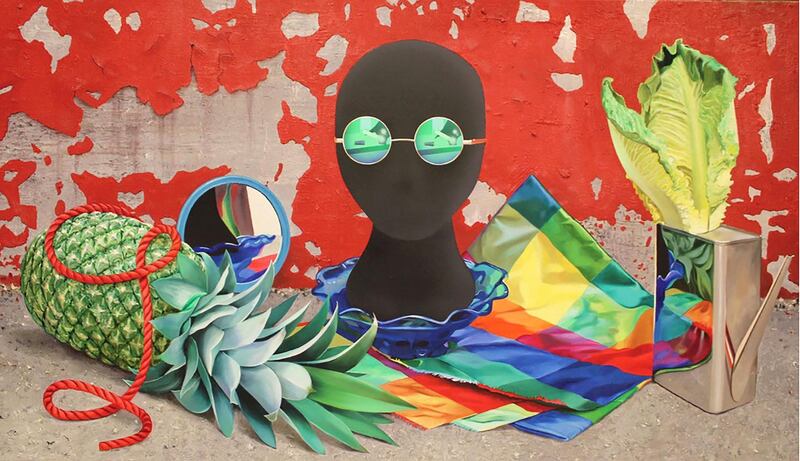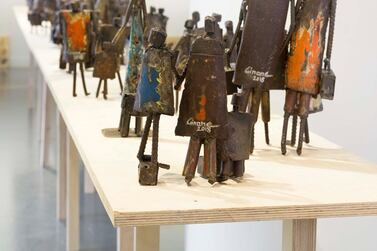In front of a triple-arched wooden trellis, rubbish lies scattered on the ground. A sprinkling of confetti can be seen resting over, and among, the refuse. From the neat lines of the trellis, two lengths of curling ribbon hold drooping helium balloons.
This imagined tableau is an artwork by American Cynthia Talmadge and is made entirely from coloured sand. Hanging in Artual Gallery, a spacious new venue in Downtown Beirut, the enormous canvas conjures memories of the 2015 rubbish crisis that left heaps of rotting litter on the streets of Lebanon's capital.
'A little bit apocalyptic but also mundane and sad and oddly beautiful'
Talmadge was unaware of Lebanon's troubles with waste when she created the picture for Still Looking: A Still Life Show, a group exhibition featuring work by eight artists living in New York that showcases the diversity of ways in which contemporary artists are engaging with the classic form. The resonance of her piece is fitting for an exhibition that aims to explore how works created in New York take on new meanings and invite new interpretations when shown in the foreign context of Beirut.
"I was sort of thinking you could think of it as after a party or a wedding or something like that, that melancholy, or you could think of it in a more extreme way as the end of the world and you're the only person left to see that this is what's remaining," explains Talmadge, who attended the opening of the exhibition in the city last week. "I wanted it to feel a little bit apocalyptic but also mundane and sad and oddly beautiful."
The exhibition is curated by Jonathan Chapline, three of whose paintings are included in the show. Having exhibited at the Beirut gallery's inaugural show in March, Chapline was interested in how cultural context changes the way work is received by viewers.
He says the ideas suggested by an axe or a sculpture by French artist Henri Matisse or a can of La Croix sparkling water can all call to mind particular cultural specificities or historical influences.
“With still life you can talk about all these different things, push and pull, take things apart and put things together, and I really saw Beirut as a similar city,” he says.
"There's so much going on in the city culturally, with so many different religious and architectural moments, and you can really see the history of the entire city – it's not hiding it. Some cities hide it and I think that what was so exciting for me was to see these layers of the onion. With this show, that's really what I wanted to talk about – how still life can show these different ways of talking about many different things."
Drawing inspiration from digital artwork
Despite their diversity of styles and approaches, the eight artists are united by certain traits. All use vivid colours in their work, giving many of the pieces a hyperrealist or pop art feel. Amy Lincoln’s acrylic paintings are filled with colourful plants that twist and twine across the canvas. Beautiful and strange, they frame childlike depictions of the sun or ponds full of perfect little waves, creating idyllic yet eerie garden scenes.
Chapline's oil paintings are characterised by saturated colours and a surreal blend of two-dimensional and three-dimensional perspectives inspired by digital artwork.
"I was introduced to the internet right when I started growing up," he says. "So for me it's always been there and drawing on a computer has been as comfortable for me as painting or drawing with a pen and paper. Then with mobile phones, we almost live in this 2D space already half the time, so it was interesting and important for me to try to translate that in a painting and use that vocabulary."
Chapline turns a sketch or an image into a digital rendering, playing with two and three-dimensional perspectives. He then translates his digital image into an oil painting, using masking tape to create perfect edges and immaculate lines. In Still Life with Skull, Samurai Crab, Golden Breastplate and Candle, he combines a skull – a trope of classical still life memento mori paintings, designed to remind viewers of the transience of life – with important cultural signifiers, raising questions about history, influence and cultural appropriation.
The things we surround ourselves with tell a story
Also offering a witty, contemporary take on the memento mori is Nikki Maloof, who painted a vase of flowers and a skull sitting on a table. Behind them, a black cat streaks across a rug decorated with a traditional Native American design, staring towards the viewer as though caught doing something naughty.
Paul Wackers, who also attended the opening, creates large-scale acrylic paintings of home interiors that play with different forms of mark making, combining elements of realism with figurative and abstract representations. "I sort of like the way that things we surround ourselves with can tell a bigger story about ourselves than our own representation would," he explains. "Using different brushstrokes or techniques, I'm often thinking of that as different languages put together."
The exhibition offers a glimpse into how artists from New York are formulating unique contemporary takes on still life, a theme that can be traced back thousands of years to the ancient Egyptian, Greek and Roman periods. On show in Beirut, both their specificities and their universalities are thrown into relief.
Still Looking: A Still Life Show is at Artual Gallery in Beirut until Thursday, September 12
